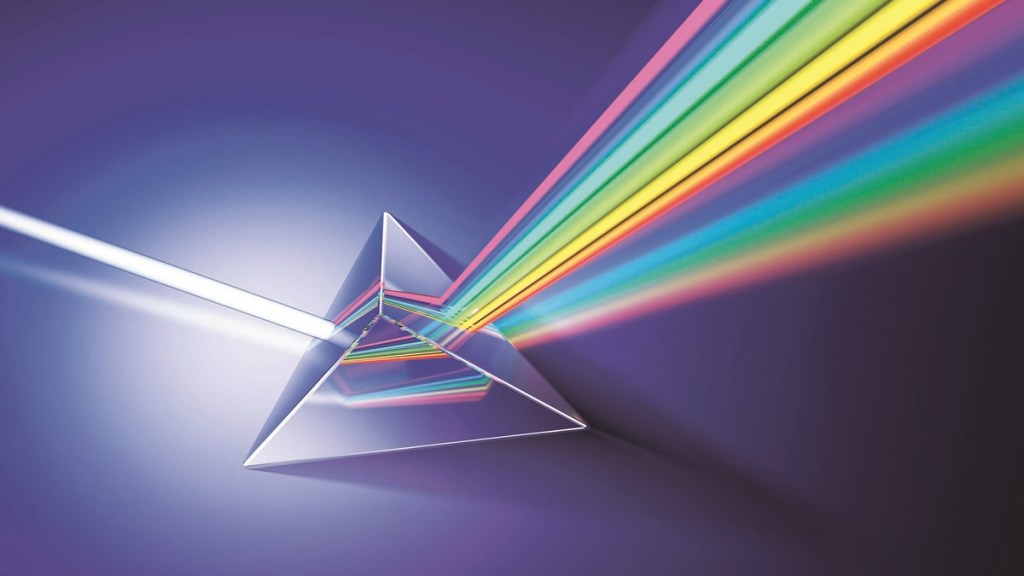We thought there’s VIBGYOR and shades of it and we have seen all the colours possible to be seen. A new study sort of dents that claim. And comes up with a new one — that a new colour named ‘olo’ exists which only five humans have ever seen. A team of researchers said they used laser manipulation of the retina and discovered a brand new colour, one which has not been experienced by human eyes. They have called it ‘olo’ and it’s not just a new colour but a different type that cannot be shared, exhibited or even described accurately yet.
This technological finding could reshape our understanding of neural pathways. It may also lead to breakthroughs in vision therapy, or even pave the way for immersive technologies. Medically, researchers might learn more about colour blindness or diseases that affect vision such as retinitis pigmentosa by such stimulation of cells in the retina. While researchers say the world is not going to see olo yet as it is lab produced, it cannot be used in
any technology anytime soon, but it may open possibilities for smartphone displays, TVs or VR headset technology in future.
The scientists developed a prototype ‘Oz’ using advanced retinal imaging and stimulation technology to target specific cone cells in the retina with a laser light. They employed a technique used to measure living retinal cells that simultaneously images and stimulates the retina.
The finding by researchers Ren Ng and Austin Roorda at the University of California in Berkeley, published in Science Advances recently, details how they generated this novel colour experience with adaptive optics and laser technology to stimulate a single cone cell in the human retina. Instead of using natural light, which normally activates multiple cone cells at once, they employed a system which accurately activated only one M-cone, isolating the signal and generating a perception never before reached by the brain.
The human eye can distinguish millions of shades of colours when light falls on colour sensitive cells called cones in the retina. There are three types of cones which are sensitive to long (L), medium (M) and short (S) wavelengths of light. Red light stimulates L cones and blue light S cones, but no natural light is able to stimulate the M cones that are present in the middle of the retina. The researchers scanned the experiment subjects’ (volunteers) retinas to pinpoint the M cones. The five subjects who were recruited for this experiment self-reported as having normal colour vision and no ocular disease condition. “Theoretically, novel colours are possible through bypassing the constraints set by the cone spectral sensitivities and activating M cone cells exclusively,” the researchers wrote in the paper.
A laser was used to scan the retina and fire a flash of light into the M cone. The brain compares the signals from these cones in order to see the whole colour range. By stimulating just one cone, the scientists skipped the brain’s normal opposition-based colour processing and generated a response without a reference. The outcome? A colour beyond the existing perceptual category.
“Attempting to activate M cones exclusively is shown to elicit a colour beyond the natural human gamut, formally measured with colour matching by human subjects,” they explained.
Researchers said they faced a hard time putting into words what they were seeing. “They (subjects) describe the colour as blue-green of unprecedented saturation. Further experiments show that subjects perceive the colours in image and video form,” they wrote. Some approximated it loosely to saturated teal or peacock blue, but all stressed that it wasn’t quite like anything they had previously experienced. Researchers referred to this completely new visual experience as olo. “We predicted from the beginning that it would look like an unprecedented colour signal but we didn’t know what the brain would do with it. It was jaw-dropping. It’s incredibly saturated,”
Ren Ng, an electrical engineer at the University of California, Berkeley has been quoted as saying in a news report.
Most importantly, olo cannot be duplicated with paint, pixels, or light. It exists only in immediate neural experience. Even the vivid turquoise square that was used to represent it in the study paper is nothing more than a stand-in. The true colour can’t be displayed on screen or printed out. Olo is, in effect, invisible outside of the lab environment that developed it.
“There is no way to convey that colour in an article or on a monitor. The whole point is that this is not the colour we see, it’s just not. The colour we see is a version of it, but it absolutely pales in comparison with the experience of olo,” Austin Roorda, a vision scientist associated with the team, has been quoted as saying.
In the report, one expert John Barbur, a vision scientist at City St George’s, University of London, pointed out that it’ is not a new colour and is more saturated green that can only be produced in a subject with normal red-green chromatic mechanism when the only input comes from M cones, adding that the work had limited value.
Researchers believe the principle ‘Oz’ colour named after the Emerald City in the L Frank Baum books, will help them probe basic science questions about how the brain creates visual perceptions of the world. “The prototype targets laser microdoses to thousands of spectrally classified cones under fixational eye motion. These results are proof-of-principle for programmable control over individual photoreceptors at population scale,” they wrote.
Researcher Ng underscored practical realities and said the world is not going to see olo on any smartphone displays or any TVs any time soon, adding that this is far beyond VR headset technology at the moment. Philosophically, it asks whether our senses have truly reached their limits — or whether many more experiences lie dormant within us, waiting for the right stimulus to unlock them.








